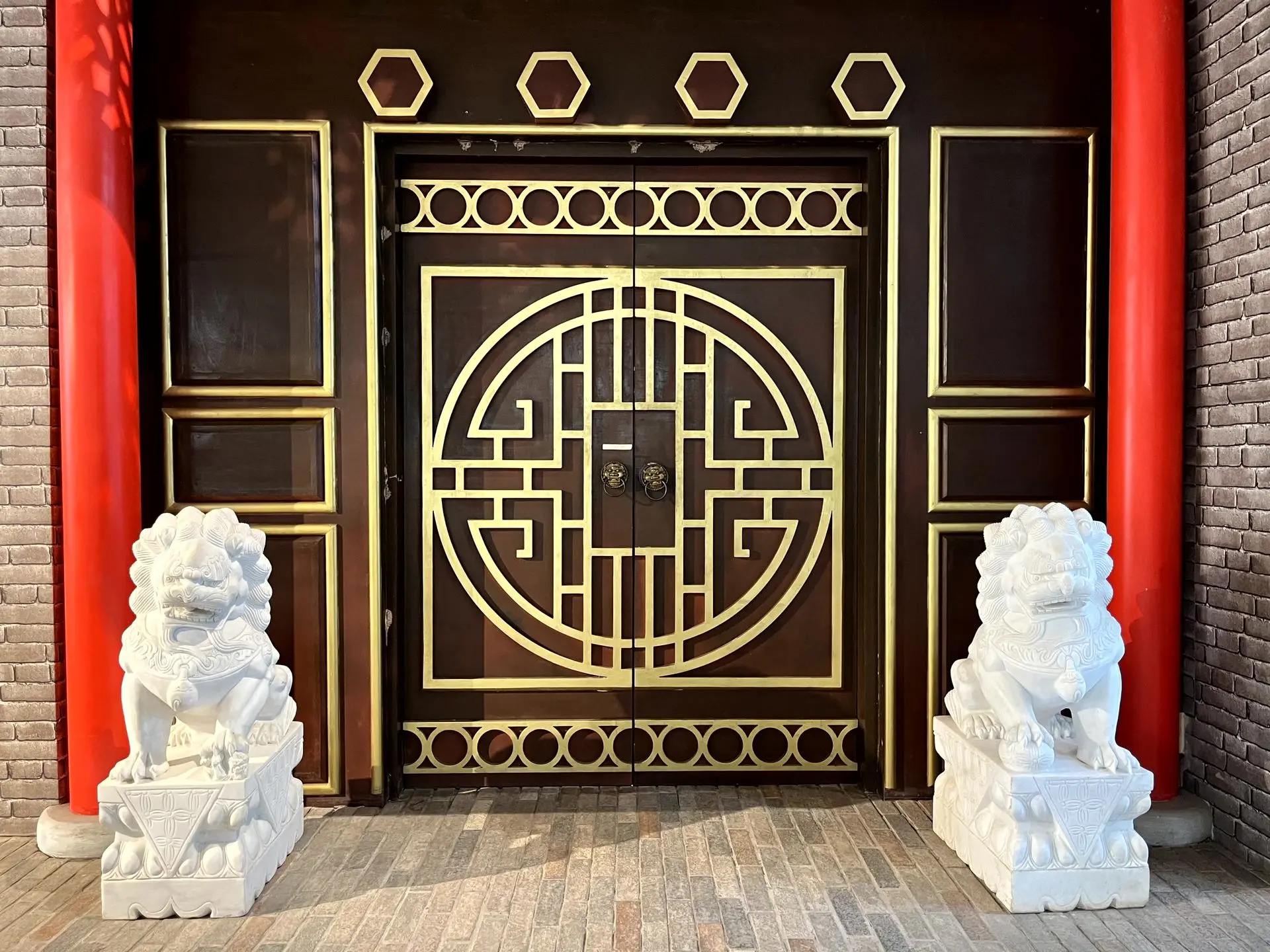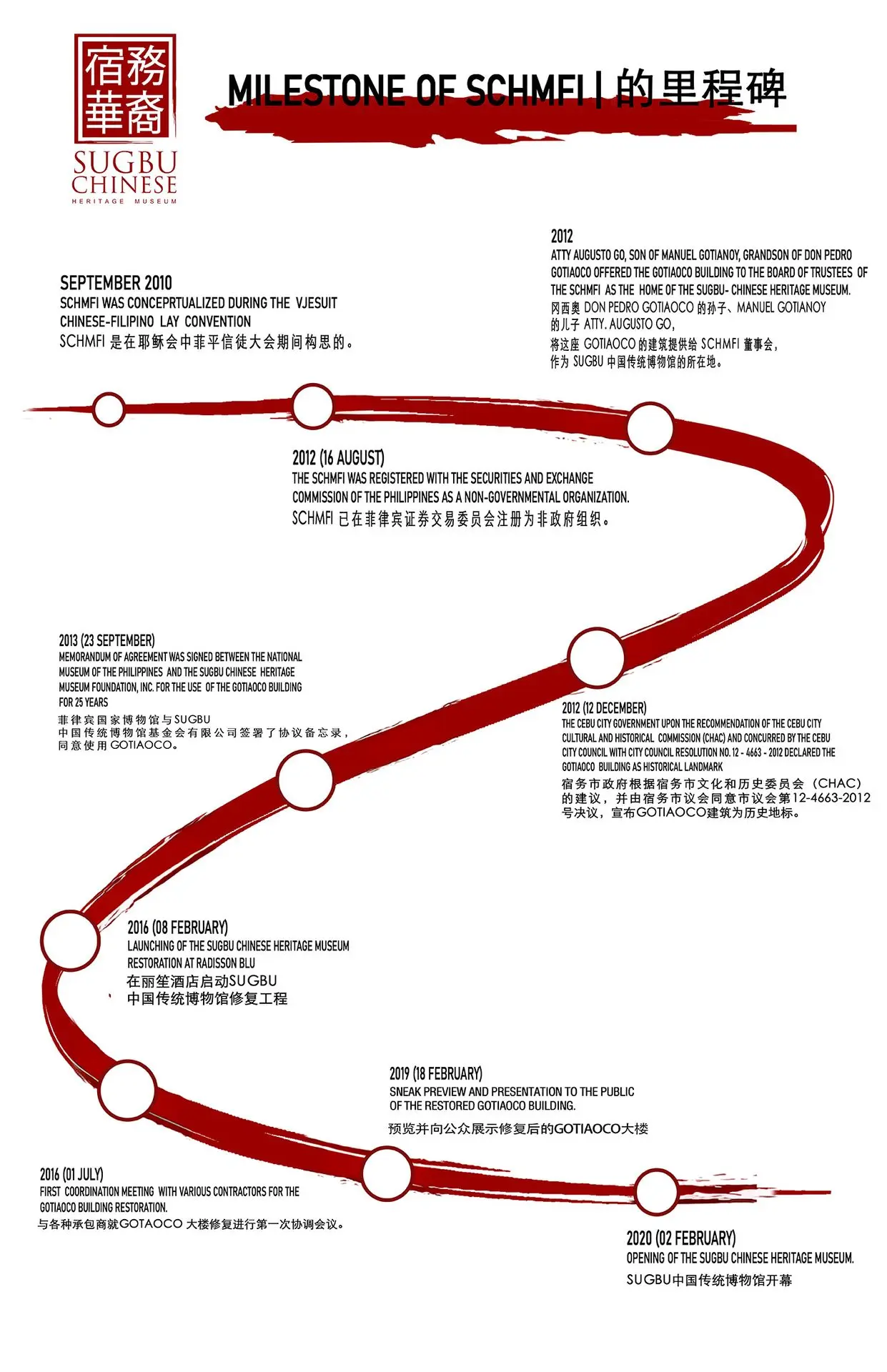Learn about Sugbu Chinese Heritage Museum here,
A Brief History
of the Gotiaoco Building
History of Gotiaoco Building before the war
During the American occupation, major infrastructure projects—including the reclamation of land from Carbon Market to Pier 3—boosted Cebu’s economy. The reclaimed area was initially under the Bureau of Lands and later transferred to DENR.
The Treaty of Paris opened Cebu to American businesses. In 1903, American entrepreneurs formed the Cebu Chamber of Commerce, led by Martin M. Levering. By 1913, the chamber secured a 99-year lease for 812.27 sqm of land.
Cebu Terminal
The building also housed several other shipping firms, including Macleod & Co., N.T. Deen & Co., Arlington Pond (later Pond & Deen Navigation Co. in 1929), and Tañon Navigation Inc., founded by Severo Lo in 1924 and formally established in 1933.


During War
There are no accounts on
how the building was used during the Japanese occupation in 1942. When the Americans counter attacked to regain Cebu City, the air raid did not spare the building. Most of it was destroyed, leaving only the ground floor and part of the exterior shell of the upper
floor.
Before Restoration
The reconstructed building no longer had the lantern and clock, replaced by a simpler crown design. Only two stories were rebuilt on the rear left wing, likely due to cost-saving by the Rehabilitation Finance Corporation. While the right wing retained its original Doric columns and moldings, the left wing's classical columns were replaced with plain rectangular post

The Gotiaoco Building after the war
After the war, the building was reconstructed through the Rehabilitation Finance Corporation (RFC), established under Republic Act 85 during President Manuel Roxas’ term. RFC later occupied the building, with operations on the 2nd and 3rd floors, as recalled by Mr. Tan Su-ching of Visayan Educational Supply.
The new structure no longer had the original lantern and clock, replaced by a simpler crown design. The photo shows a three-story building, except for the rear left wing, which had only two floors.
It’s believed that post-war, Manuel Gotianuy acquired the lease rights and ownership of the building.
In May 1948, Columbia Broadcasting System (CBS) expanded to Cebu, affiliating with KZBU, a station owned by the Philippine Broadcasting Corporation.

History of Gotiaoco Building before the war
During the American occupation, major infrastructure projects—including the reclamation of land from Carbon Market to Pier 3—boosted Cebu’s economy. The reclaimed area was initially under the Bureau of Lands and later transferred to DENR.
The Treaty of Paris opened Cebu to American businesses. In 1903, American entrepreneurs formed the Cebu Chamber of Commerce, led by Martin M. Levering. By 1913, the chamber secured a 99-year lease for 812.27 sqm of land.
Cebu Terminal
The building also housed several other shipping firms, including Macleod & Co., N.T. Deen & Co., Arlington Pond (later Pond & Deen Navigation Co. in 1929), and Tañon Navigation Inc., founded by Severo Lo in 1924 and formally established in 1933.


During War
There are no accounts on
how the building was used during the Japanese occupation in 1942. When the Americans counter attacked to regain Cebu City, the air raid did not spare the building. Most of it was destroyed, leaving only the ground floor and part of the exterior shell of the upper
floor.
Before Restoration
The reconstructed building no longer had the lantern and clock, replaced by a simpler crown design. Only two stories were rebuilt on the rear left wing, likely due to cost-saving by the Rehabilitation Finance Corporation. While the right wing retained its original Doric columns and moldings, the left wing's classical columns were replaced with plain rectangular post

The Gotiaoco Building after the war
After the war, the building was reconstructed through the Rehabilitation Finance Corporation (RFC), established under Republic Act 85 during President Manuel Roxas’ term. RFC later occupied the building, with operations on the 2nd and 3rd floors, as recalled by Mr. Tan Suching of Visayan Educational Supply.
The new structure no longer had the original lantern and clock, replaced by a simpler crown design. The photo shows a three-story building, except for the rear left wing, which had only two floors.
It’s believed that post-war, Manuel Gotianuy acquired the lease rights and ownership of the building.
The Gotiaoco Building was once a hub of business and government activity in Cebu, hosting major firms like CBS, Royal Lines, William Lines, and the First Insular Bank of Cebu, later PCI Bank, which remained until 2005. Government offices also occupied its floors, including DOLE, DENR-PENRO, and COA. A devastating fire in 1995 damaged the upper storeys, forcing tenants to leave and marking the start of the building’s decline and gradual abandonment. .


Experience Live
For a deeper and more immersive experience, schedule your visit today and explore the stories behind each artifact, Photographs and cultural structures up close.

